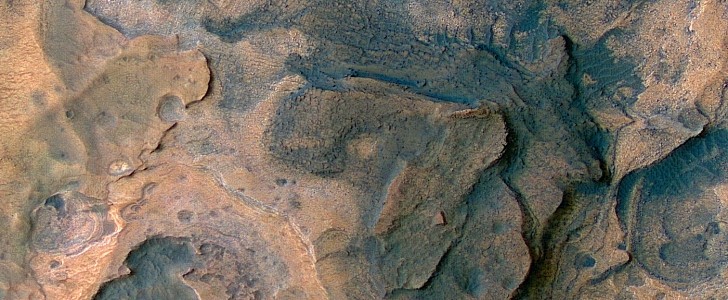There are a lot of things we don’t know about planet Mars, and if we are to sometime go there and call the place a second home, we need to get some of those mysteries sorted out. And hardware the likes of the HiRISE camera, which is presently orbiting the planet, serves exactly that purpose.
Ever since its carrier spaceship, the Mars Reconnaissance Orbiter, arrived at its destination back in 2006, the camera has been hard at work and sent back over the years tens of thousands of images of the Red Planet, which are now slowly being released by NASA and the University of Arizona.
We’ve featured the most interesting of them over the past year or so, and we’ll continue to do so as we wait for humans to get their act together and head over there in person. Today’s treat: a portion of the planet called Iani Chaos.
That would be a place near the Ares Vallis that offers a lot of opportunities for the study of the planet's past, thanks to the terrain that makes up the place. Chaos terrain is a place where several distinct surface features, like ridges, cracks, and plains, come together apparently at random and create stunning instances of the past.
Scientists believe this region formed as a result of subsurface water and ice flooding the surface at some point, and in the case of the exact area shown here, by the collapsing of some places, which then got filled with sediments.
According to the scientists looking at these images, “chaos terrain is typified by mesas and valleys,” and “the initial breakup of the land is due to tectonic forces. With time and erosion the valleys widen and the mesas grow smaller,” NASA says.
All of the above pretty much means that, despite the rather chaotic appearance of the region, there’s some inner order to it, rules that had to be followed for it to end up looking like it does now. By knowing those rules, and applying them as we study Mars, we’ll, of course, better understand the ball of rock some of us might one day call home.
We’ve featured the most interesting of them over the past year or so, and we’ll continue to do so as we wait for humans to get their act together and head over there in person. Today’s treat: a portion of the planet called Iani Chaos.
That would be a place near the Ares Vallis that offers a lot of opportunities for the study of the planet's past, thanks to the terrain that makes up the place. Chaos terrain is a place where several distinct surface features, like ridges, cracks, and plains, come together apparently at random and create stunning instances of the past.
Scientists believe this region formed as a result of subsurface water and ice flooding the surface at some point, and in the case of the exact area shown here, by the collapsing of some places, which then got filled with sediments.
According to the scientists looking at these images, “chaos terrain is typified by mesas and valleys,” and “the initial breakup of the land is due to tectonic forces. With time and erosion the valleys widen and the mesas grow smaller,” NASA says.
All of the above pretty much means that, despite the rather chaotic appearance of the region, there’s some inner order to it, rules that had to be followed for it to end up looking like it does now. By knowing those rules, and applying them as we study Mars, we’ll, of course, better understand the ball of rock some of us might one day call home.






